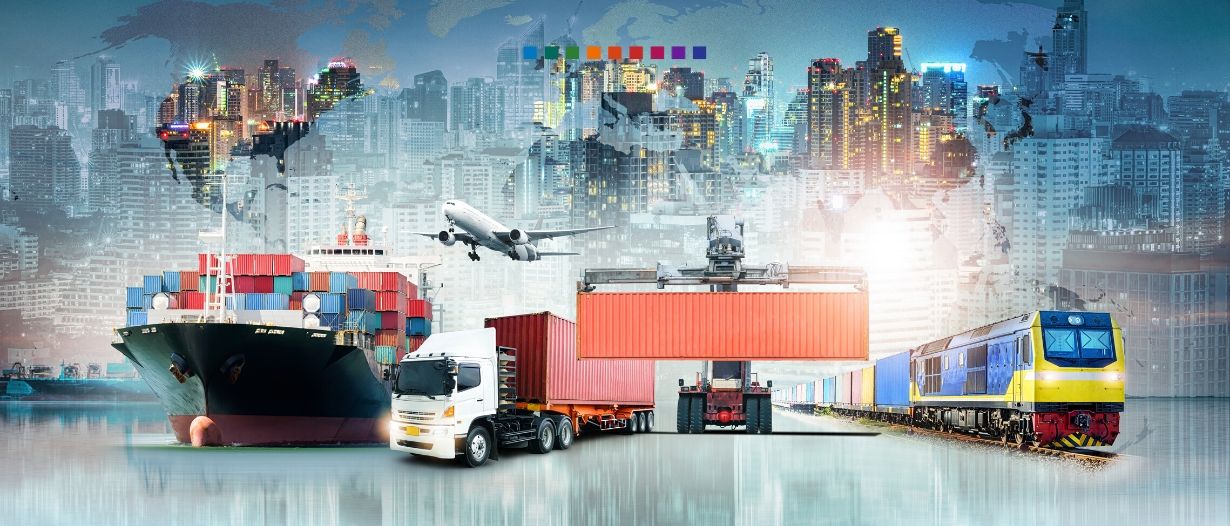Southern African Countries (SAC) should strongly consider how they can re-organise overland transit systems so that transportation of cargo becomes more resilient and seamless. With the ongoing impact of the Covid 19 pandemic, economies are struggling and it’s significant for SAC to reboot the transit systems for improved and timely delivery of cargo.
What systems are being used globally?
1. Local Transit Bond (LTB)
This is a system where customs in transit countries will receive proper payment dues and duties for any goods in transit improperly discharged. (Krausz, 2003). LTB’s are administered by the country’s customs authority and are widely used Worldwide. The dominant system used is Automated Systems for Customs Data (ASYCUDA) which is used to control transiting cargo to exit port. A good example is Zimbabwe which has a customs sealing system merged with ASYCUDA, the system on its own increases the transit cost of goods.

2. Regional Transit Bonds (RTB)
Regional transit bonds (RTBs) are single guarantee bonds (for freight) aimed at reducing border delays and costly procedures, including revenue leakage when different bonds are required at each border crossing (SAIIA, 2003). SADC (Southern African Development Committee) SADC and Common Market for Eastern and Southern Africa (COMESA) are trying to set up regional transit management systems (TMS’s) which would help in eradicating trade barriers.
These two regional economic communities will likely need to collaborate on these in light of the proposed Tripartite Free Trade Area (TFTA) (SADC, COMESA and East African Community (EAC)) on improving Africa’s TMS’s by using transit systems gaining ground and a good example is the TIR system.
The World’s Only Customs Transit System – TIR
Transport International Routiers (TIR) is a universal transit system that allows goods to transit several countries in a sealed container bearing a single carnet as transit bond for all borders. It originated in Europe in 1949, was elaborated on in the TIR Convention under the UN Economic Commission for Europe in 1954 (Arvis JF). It was further elaborated at the Geneva convention in 1975, and has some American, European, Asian and African countries.
TIR in English stands for International Road Transport and was found by the United Nations Economic Commission for Europe (UNECE), administered by International Road Union (IRU). (UNECE,2015) It has 76 members to date and aimed at streamlining and harmonising International Road Formalities hence allowing cargo movement across the borders of Contracting Parties to the TIR Convention with minimum customs interference.
Below is a figure 2 diagrams which are TIR’s management system and structure,
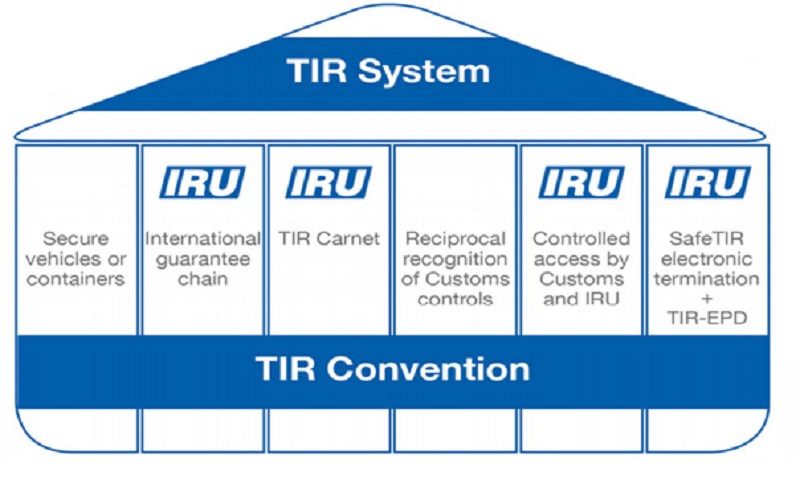
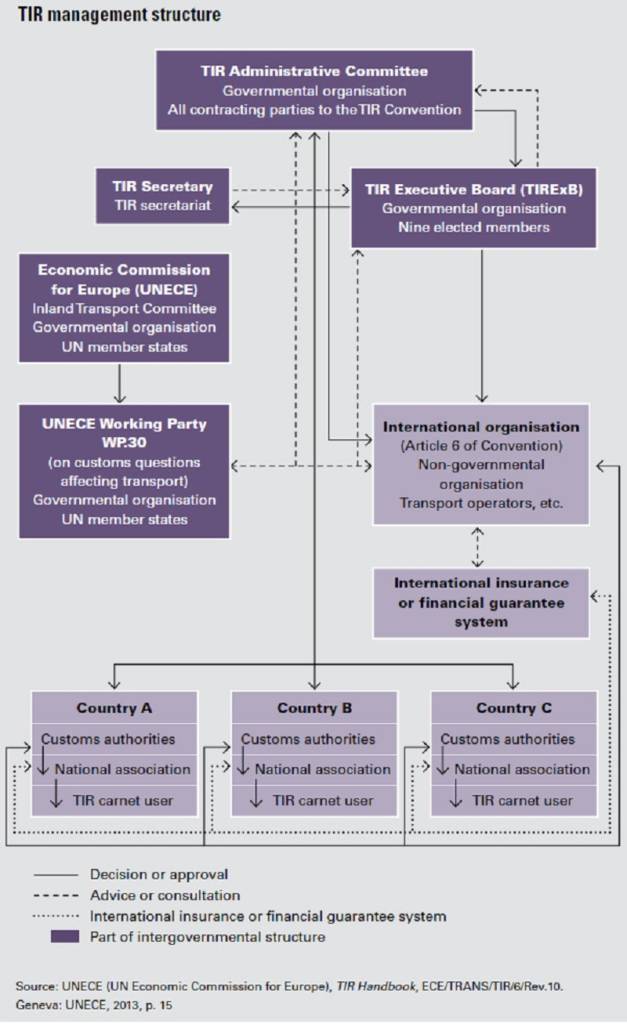
Carnet TIR vs ETIR
1. What’s Carnet TIR?
International trade dictionary defines it as ‘a document issued pursuant to the p permitting the sealed road transport shipments to traverse European TIR-members countries without undergoing customs inspection until the destination’. It’s issued by IRU to national road associations of the member states and used on one trip basis. If the TIR agenda maps forward the TMS’s of SAC it will reduce border standing times and improve efficiency.
2. What’s eTIR?
ETIR is a system based on real-time digital data exchange between transport operators, Customs authorities, TIR system guaranteeing organisations, and the United Nations. (WCO, 2016) TIR holders are issued eTIR carnets by guarantee associations and that enables pre-declarations (TIR-EPD). Customs associations, Carnet holders, United Nations (UN) and IRU can exchange electronic data on the eTIR platform hence making it a public-private partnership. ETIR is being introduced
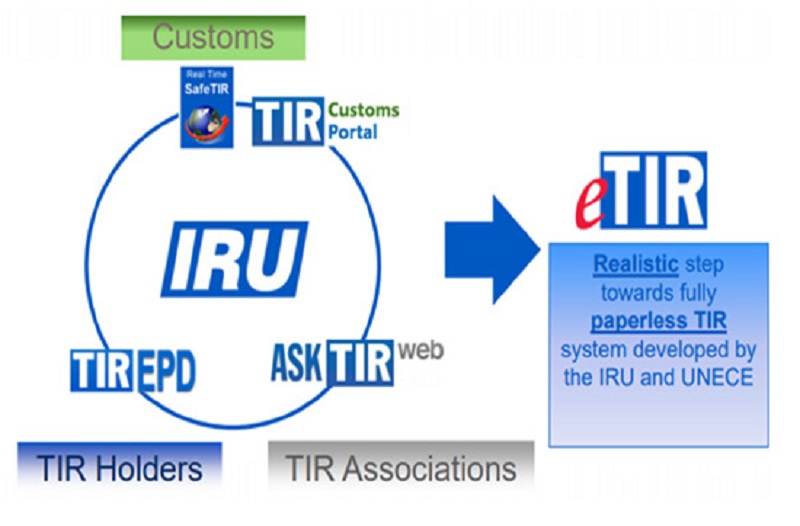
Moving from Paper to Paperless TIR System
ETIR Pilot Project of Turkey and Iran 2015
In 2015, Turkey and Iran customs authorities agreed to pilot run the eTIR project and it was officially launched in October. The project began around December and the players were two volunteer transporters and the countries’ two TIR guaranteeing associations. The organisations cooperated with IRU and UN, they created a single window using prevailing web-based customs systems to enable real time data exchange. The procedure was 100% paperless and provided advance information sharing using eTIR Carnets.
The results of the project led to another project being rolled between Turkey and Iran in 2017. The success and progress is illustrated in below diagram:
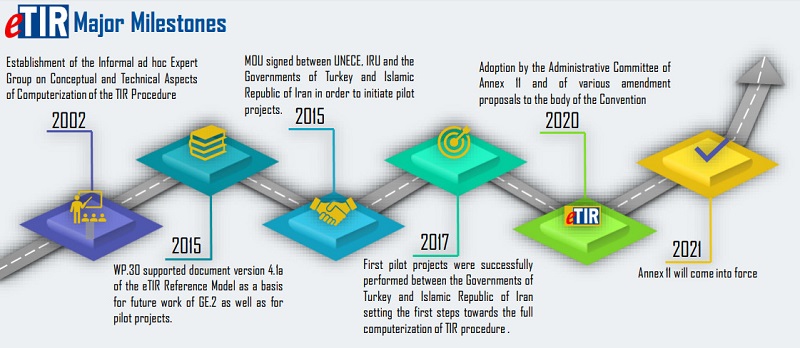
SAC Map
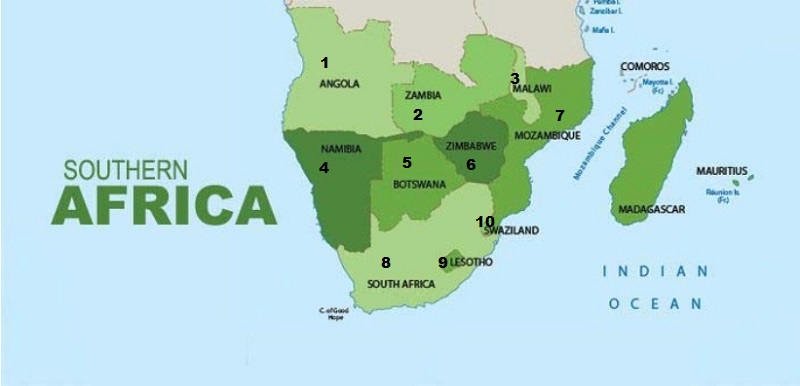
There are 10 countries in the SAC region which are Angola, Botswana, Swaziland, Lesotho, Malawi, Mozambique, Namibia, South Africa, Zambia and Zimbabwe.
SAC Economic and Trade Issues
Of the 10 countries in SAC, Zambia, Zimbabwe, Lesotho, Swaziland, Botswana and Malawi are landlocked developing countries (LLDC’s) and these countries:
- Have slow growth
- Are isolated from world markets
- Experience high transit and transport costs
- Lack territorial access to the sea
Landlocked developing countries thus pay a high price for not having a sea port of their own. Their trade depends on ports of other countries. Moreover, many transit countries impose fees and road tolls that raise costs even further (Snow Et Al, 2003). Mackellar Et Al. (2000) argue that being landlocked reduces a country’s average growth by 1.5 % annually. The coastal countries are at an advantage as they don’t suffer the same consequences.
African Free Trade Area (AfCTA) and TIR
At the African Union Summit of March 2018 held in Kigali, member states agreed to form AfCFTA. 54 of 55 African states to date have signed up to the agreement, (WTO, 2019) it will be the world’s largest Free Trade Area once it’s up and running (IRU, 2018). It will encourage intra-Africa trade and investment necessary. Considering TIR and pairing it with AfCFTA will have better transit systems that reduce African trading costs and create a unified continental market.
Way Forward in Implementing TIR System
Umbretto De Pretto (2015) advised that, “the results show that TIR is up to 16 times less expensive than the national bond system.” (UNCTAD, 2016). IRU is working closely with the Southern African Development Community (SADC) and COMESA to introduce TMS’s to enable movement of cargo from Walvis Bay to the SAC region thereby becoming a logistics hub for Southern Africa. The Durban to Zambia route via Zimbabwe/Botswana is being considered by SADC and COMESA on TIR implementation.
What are the benefits of TIR Implementation?
- Reduces transit costs and border delays on transit cargo.
- Boosts trade (imports and exports) and development
- More efficient and secure to goods in transit.
- Reducing the risk of fraud and improving security on transiting cargo.
- It’s highly traceable with all TIR information kept by IRU.
The Other Side of TIR
It is worth noting that implementing the TIR system will have potential revenue loss on national clearing and forwarding agents, insurance companies (on a national level), and customs. There is a need for engagements before it’s rolled out.
Conclusion
If SAC adopts the TIR system it will introduce a stress-free logistics chain that has increased transparency, where movement of goods will be seamless and of less risk. It’s a necessity for SAC to improve security and significant efficient control measures for goods in transit. If we could picture the TIR system being implemented in the Post Covid era, it will be a step way forward in going paperless, reducing trade barriers, as well as adding value to existing transit transportation systems.
This article was written by a member of TFG’s 2020 International Trade Professionals Programme. Find out more here.

Disclaimer: The views that have been expressed on this page are that of the author, which may or may not be in line with their company, Trade Finance Global or London Institute of Banking and Finance’s view.















